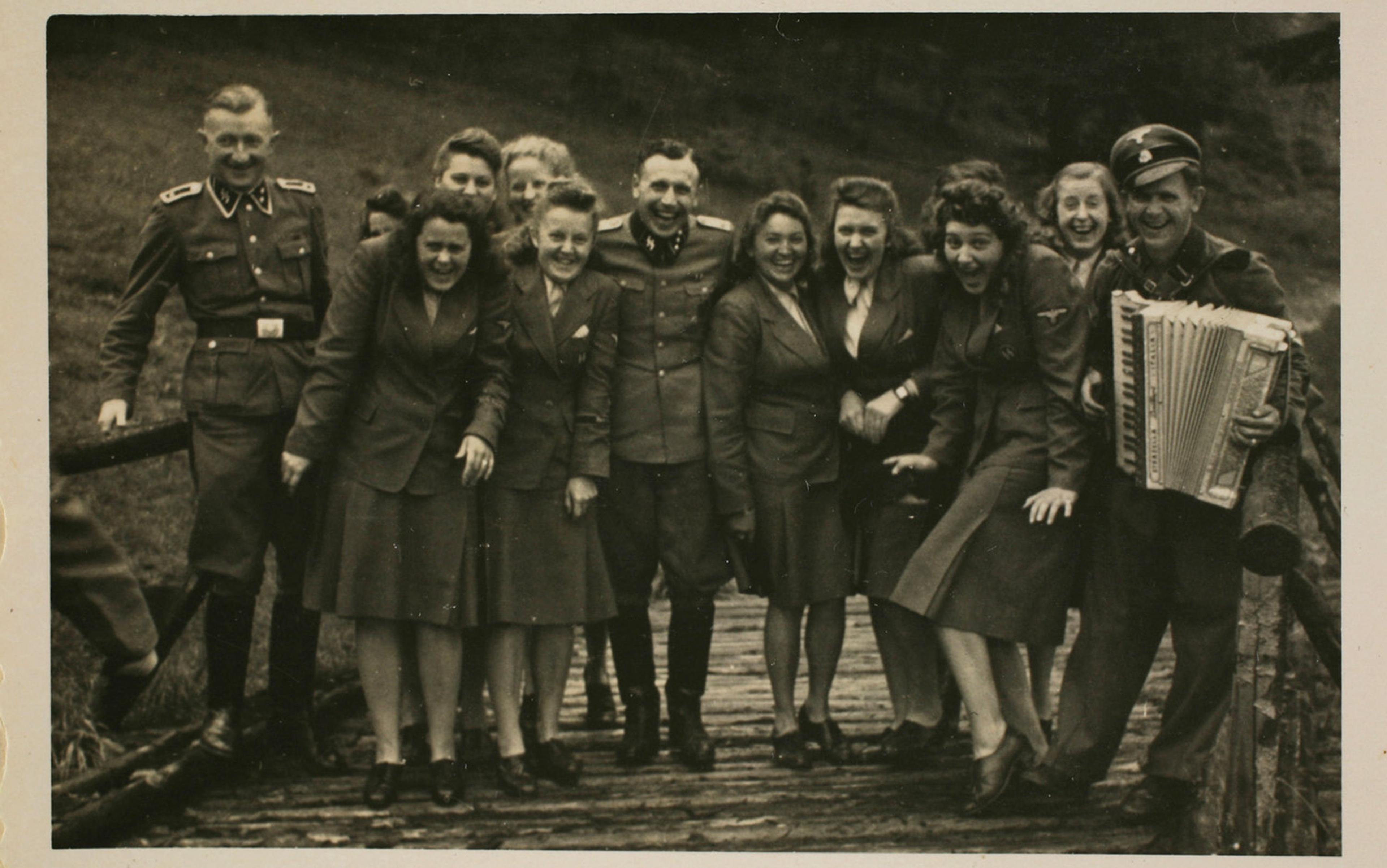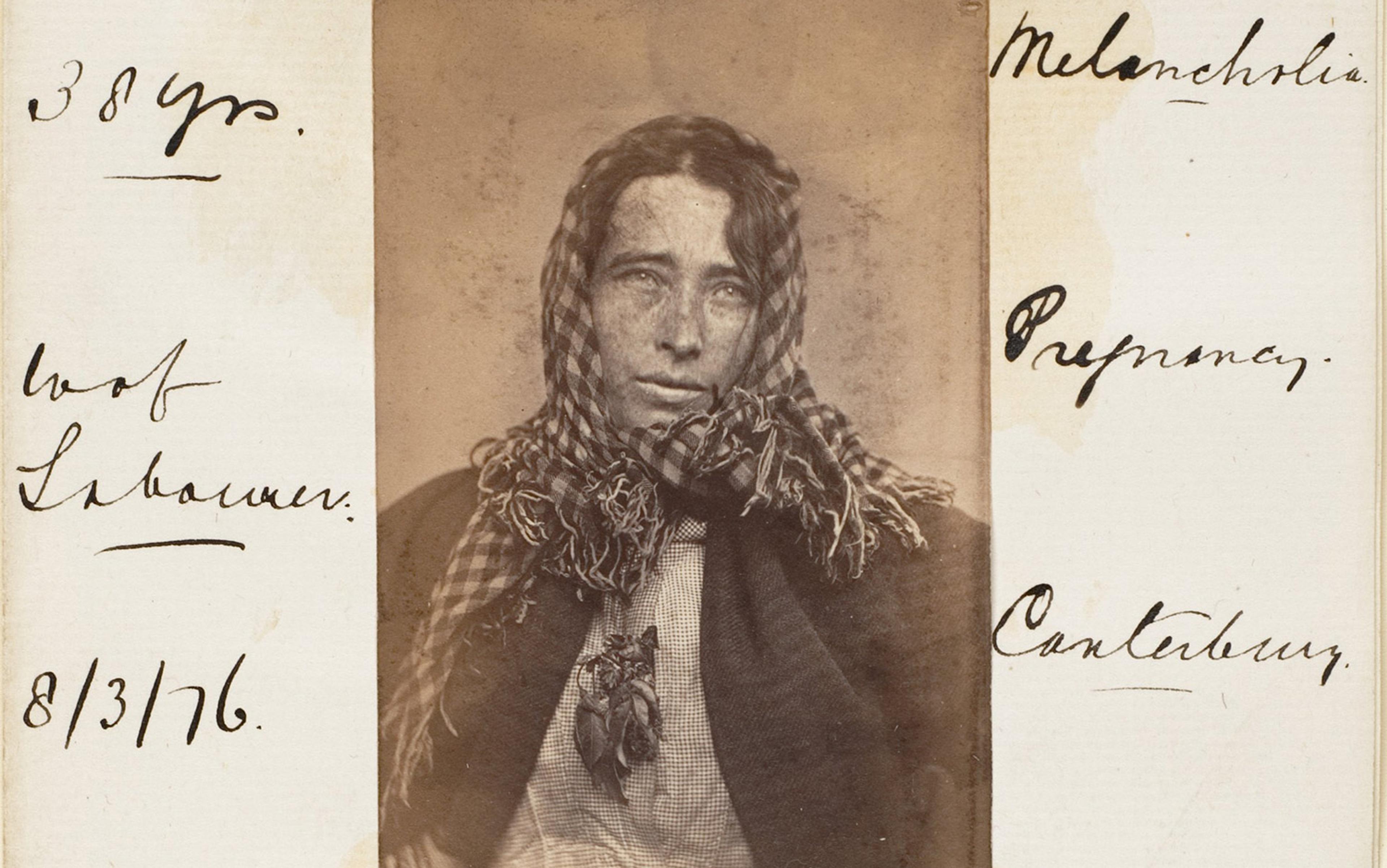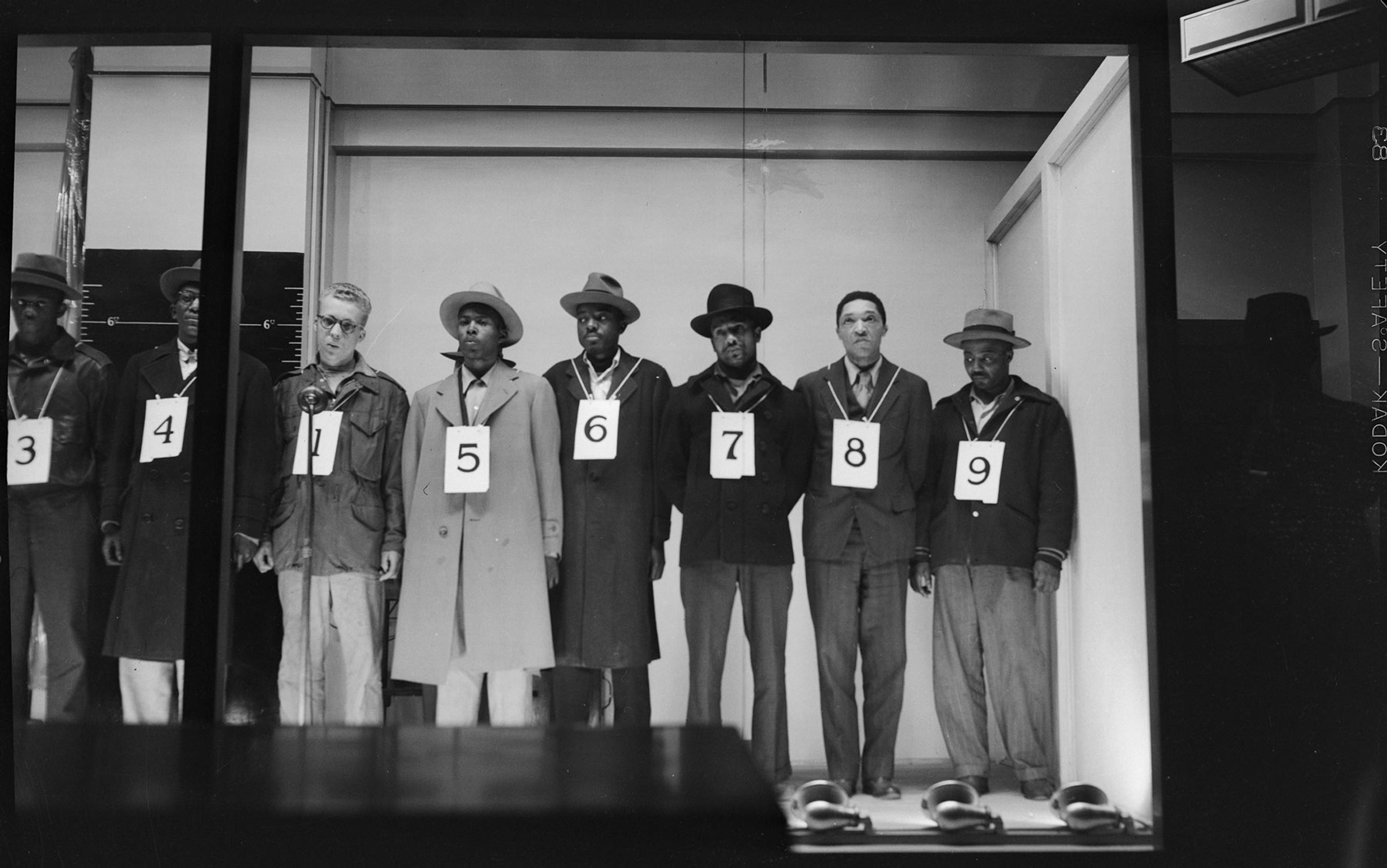In 1871, while performing an autopsy on a notorious bank robber, the Italian criminologist Cesare Lombroso saw something unusual. It was a small hollow at the base of the skull, under which lay an enlarged section of the spinal cord. The feature was rare in Europeans, but he had seen it in lower apes and certain ‘inferior races’ of South America. Eureka. ‘At the sight of that skull,’ he later wrote, he understood the biological nature of the criminal – ‘an atavistic being who reproduces in his person the ferocious instincts of primitive humanity’.
So was born the theory of ‘the criminal man’, the idea that certain people are biological criminals. According to Lombroso, these people represented an evolutionary throwback who, by a quirk of biology, had inherited the brain structure of their primitive forbearers. They exhibited poor impulse control, brutality and selfishness, lack of empathy, and had no sense of higher morality. ‘Theoretical ethics passes over these diseased brains as oil does over marble, without penetrating it,’ he wrote. They bore outward signs of this condition as well, including a low brow, big jaw and long arms, like apes. At trials, Lombroso could identify a guilty person simply by observing his physical features.
The theory caught on. Fuelled by the new sciences of evolution and physical anthropology, the ‘born criminal’ theory conveniently explained Europe’s rising crime rates. Never mind about social inequality and the economic dislocation brought on by newly industrialised societies: biology told all.
In the midst of all this, Francis Galton, Charles Darwin’s cousin, coined the term ‘eugenics’, creating a handy field guide to identify the types of criminal man. He collected hundreds of photos of felons, sorted them by crime and overlaid them to create composites of each, such as bank robbers and pickpockets. Then he overlaid them all to produce a composite of the ‘master criminal’ – a thick-browed, blurry-eyed thug.
Many suggested that this new understanding of inheritance and evolution might make it possible to stop crime before it began. The French criminologist Maurice de Fleury argued for the ‘legal, authorised elimination’ of born criminals from the breeding pool. ‘Is it really human to allow these monsters, these creatures of darkness, these nightmarish larvae to breathe?’
We all know what horrors that thinking led to – a way of classifying humans that ultimately arrived at Nazi extermination camps. Yet by the 1960s, scientists were once more on the case, hoping to identify the genetic causes of crime. This time, they analysed blood tests from Scottish prisoners in a high-security mental hospital to come up with the theory that violent men often have two Y chromosomes instead of a single X and a single Y, like normal men. (The extra chromosome appeared in eight of the 197 prisoners they analysed.) The idea remained popular until an international team of scientists definitively debunked it with a much larger study in 1976.
The XYY theory joined the hall of scientific infamy that included the ‘Jukes’ study, originally published in 1877, suggesting a genetic link in an extended family of criminals. (It later turned out that the subjects of the study were not in the same family; nor were they all criminals.) The equally infamous Kallikak study of the early 1900s purported to track simple-mindedness through several generations of a pseudonymous family. It too was debunked, but not before US immigration authorities used it for many years to justify the exclusion of certain ‘undesirables’.
You would think that after all these misbegotten studies scientists would have given up on their efforts to find a biological basis for crime. But no: in recent years there’s been a renewal of the science, most recently in the studies of an apparent ‘warrior gene’ that makes some men (it’s always men) inherently violent. The reader might be forgiven for asking: when will all this junk science end?
That was my thinking when I began an enquiry into the biosocial studies of crime. As the author of a book on the origins of criminology, I was prepared to see a repetition of the patterns I’d seen with those 19th-century scientists: premature conclusions, racist assumptions, and classifying offenders as ‘other’. But I found something else.
To investigate the biological origins of crime, today’s researchers look into three major areas: population studies, brain scans and genetic analysis. Population studies look at large numbers of people in hopes of finding meaningful connections. For example, in 1984 the psychologist Sarnoff Mednick tapped into a Danish database of more than 14,000 adopted children, some of whom had been convicted of crimes. Mednick found that more than twice as many offenders convicted of property crimes, such as breaking and entering, had a biological father who was a criminal, compared with those who had an adopted criminal father; the proportion was even higher for repeat offenders. He concluded that criminal parents passed on ‘some factor’ to their biological children that made it likelier for them to become criminals, but noted that the correlation did not hold true when looking at violent crimes such as murder or assault.
Others have studied twins to look for hereditary similarities. Scientists who have analysed Denmark’s twin records have found a stronger correlation in crime between identical twins than between non-identical ones. That’s not to say that born criminals exist, according to Irving Gottesman, a psychologist at the University of Virginia who studied the Danish twin records; but heredity seemed to play a role in setting up the odds.
Adoption and twin studies are provocative, but most have a basic flaw – looking at behaviours and then retroactively searching for the factors that formed them. By relying on court records and people’s recollections, they start with imprecise and often inaccurate data.
You get better results by following large numbers of people prospectively over long periods of time, collecting immense amounts of data and watching the behaviour as it develops. Several scientists have performed these longitudinal studies, including Avshalom Caspi and Terrie Moffitt of Duke University in North Carolina, the husband-and-wife team of psychologists who have been following residents of Dunedin, a small city in New Zealand, for more than four decades. Visiting their subjects every few years, they’ve tracked a huge array of physical and psychological data, including brushes with delinquency. For example, in 2011 they published a finding (one among the hundreds they have produced over the years) that psychological assessments of self-control in children as young as three can predict whether a child will become a criminal in his or her 30s. They were able to reach that conclusion only after compiling the data of more than 1,000 people who had been tracked from early childhood to adulthood.
A second way to look at criminal biology involves metabolic brain scans, which became possible with the refinement of PET-scan technology in the mid-1990s. Unlike other scans that image the brain’s structure, PET scans record the brain in real time by showing areas of active glucose metabolism. A typical test might involve giving the person a repetitive task, such as pressing a button whenever a certain letter appears on a screen, and watching which brain areas light up.
the absence of that gene could lead to a build-up of the neurotransmitters, setting up a biochemical hair-trigger
Scientists have used this technology to scan the active brains of psychopaths and murderers, and compare them to people with ‘normal’ brain activity. One striking result: in psychopaths’ brains, the prefrontal cortex, the seat of executive function, fails to adequately regulate signals coming from the more primitive and impulse-driven part, called the amygdala. The tentative conclusion is that while psychopaths might know they’re about to do something wrong, they lack the neural circuitry to resist the impulse.
Genetics research is most controversial of all. A foundational study began in 1978, when a woman with extremely violent men in her family approached Han Brunner, a clinical geneticist at the University of Nijmegen in Holland, and asked if he could do some genetic testing. Brunner agreed, and undertook a 15-year study in which he tracked down several generations of the men, categorised their behaviours, and took blood samples. He found they all had a defect in a particular gene. That gene encodes for MAOA (monoamine oxidase), an enzyme that breaks down neurotransmitters associated with agitation and alertness. Brunner theorised that the absence of that gene could lead to a build-up of the neurotransmitters, setting up a biochemical hair-trigger.
Other scientists tested the idea by breeding laboratory mice without the MAOA gene. The gene-deficient rodents attacked their cage-mates much more readily than untampered-with mice. Later, as part of their massive Dunedin study, Caspi and Moffitt tracked the behaviour and took saliva samples every few years from more than 400 young men as they grew from age three to 26. After tabulating their results, in 2002 they reported that low levels or absence of the MAOA gene, coupled with a history of child abuse, increased the risk that a person would grow up to be violent. In other words, those children with the genetic abnormality were less able to shake off the abuse they suffered and become normal, non-violent adults.
It didn’t take long for the media to pick up on the notion that a single gene caused aggressive behaviour, and label it the ‘warrior gene’. One of the sillier examples was the National Geographic TV special Born to Rage? (2010), in which the punk-rocker Henry Rollins interviewed former gang members, mixed-martial artists and some tough-looking dudes in a Harley repair shop, and then brought them to a lab that tested them for the warrior gene. The testing, of course, found no pattern at all.
With all this oversimplification and hype, it’s tempting to dismiss an entire field of study as bogus, or racist. But that’s not the case. Instead of being false, the findings are nuanced and complex.
While one gene does not equal one behaviour, for instance, patterns in thousands of genes can interact with thousands of behaviours in a constantly changing human environment. One study of fruit flies bred for aggression found partial links to 80 different genes. It’s also become known that gene expression is not a one-way street: while genes might affect a person’s body or even behaviour, the person’s environment can affect genetic expression. In one of their studies undertaken in Dunedin, Moffit and her post-doctoral student Idan Shalev found that 10-year-olds who experienced violence showed the kind of wear and tear in their DNA normally associated with ageing. All this means that, while it’s possible that a particular gene deficiency might have something to do with violent behaviour, it’s ludicrous to say that it directly caused it.
The same is true of brain structure and function. In recent years, researchers have learned that just as the brain can set tendencies, experiences can influence how they’re expressed. Indeed, two of the nation’s three most prominent researchers in this field – the neuroscientist James Fallon of the University of California, Irvine, and Adrian Raine, professor of psychology, psychiatry and criminology at the University of Pennsylvania – found some disturbing patterns when they scanned their own brains. In his book The Psychopath Inside (2013), Fallon recalls how he had taken dozens of brain scans of psychopaths and normal people, including his own. He was sorting through a pile of scans when he noticed one with very low brain function in areas associated with self-control and empathy, ‘suggesting that the poor individual it belonged to was a psychopath’. That brain, he later discovered, was his own.
Raine experienced a similar revelation. He, like Fallon, credits his upbringing with channelling his ‘psychopathic’ tendencies into a reasonable person, albeit a headstrong and impulsive one. ‘I had parents who sort of loved me,’ Raine told the NPR show Fresh Air in 2013. ‘There was always a roof over my head, and I got on with my brother and sisters. You know, maybe that’s the critical ingredient: some love.’
An impulsive man who lives in deprivation and has been handed a gun is more likely to make a bad decision than an impulsive guy from a nice neighbourhood holding a tennis racket
Contrary to what you might see in the media, not every study is the newly delivered truth from Mt Sinai or a step on to the slippery slope of eugenics. Scientific research rarely involves earth-shaking revelations. It’s the accumulation of information that eventually might lead to a new and more accurate way of viewing things. Studies suggesting links between genetics, brain structure and crime are merely pieces of evidence that add to an evolving understanding of something quite complicated.
Minus the clutter, if you look at the totality of peer-reviewed studies of the past several years, it’s hard not to come to the conclusion that biology plays some role in criminal behaviour, impossible to quantify. The new science of epigenetics proposes an interaction between environment and heredity, in which environmental factors (such as childhood abuse) can affect the expression of genes. In other words, the nature-nurture division that scientists have been arguing about for more than a century is narrowing, and might someday disappear. Genes and brain structure do not represent a simple on-off switch that determines a person’s behaviour but, as some studies show, they can indicate a vulnerability. A temperamentally-impulsive young man who lives in deprivation and has been handed a gun is more likely to make a bad decision than an equally impulsive guy from a nice neighbourhood holding a tennis racket.
Raine has been studying brain scans for decades, and he has come up with a kind of grand unified theory of violence. He describes it with the phrase ‘from genes to brain to antisocial behaviour’. Certain gene abnormalities can lead to structural brain abnormalities that lead to emotional and cognitive abnormalities (such as poor impulse control) that can lead to anti-social behaviour. At the same time, he writes, early life experiences – including maternal neglect, poor nutrition, or being surrounded by gang violence – can feed into the cycle.
‘In this context,’ writes Raine, ‘how moral is it for us to punish many criminals as harshly as we do?’
Here’s where today’s researchers fundamentally diverge from their 19th-century forbearers, not only in the content of their research but its direction. No one is suggesting the existence of ‘born criminals’, or that such people need to be permanently locked away. Fallon posits a ‘three-legged stool’ model of psychopathy, involving genes, brain function and early childhood exposure to emotional, physical or sexual abuse. The one component we can affect – childhood violence – involves social, not biological, intervention. Raine and other criminologists propose that courts consider an alleged criminal’s genetic and neurological make-up prior to sentencing – not to impose lifetime segregation for someone with violent predispositions, but to include appropriate treatment and care.
We’ve already seen how biological thinking affects the justice system in a progressive way. Neurologists have shown that the juvenile brain is incompletely developed and prone to making bad decisions. The result: many jurisdictions, including the US Supreme Court, have banned capital punishment and life-without-parole imprisonment for juvenile offenders.
In recent years, some prison systems have used cognitive behavioural therapy with offenders rather than simply lengthening their sentences. The therapy helps them break out of old patterns by recognising situations that might trigger a violent reaction; replacing violent impulses with non-violent ones; and practising problem-solving and coping skills. Not only has the treatment caused reductions in recidivism, but studies show it can have neurological effects – reprogramming the way brains react to certain stimuli. Here, too, according to a study from criminologists at Western Carolina University and the University of Cincinnati, biology has counteracted the claim that ‘rehabilitation is a fuzzy, liberal enterprise’. The fact is, those who see a genetic and neurological component to crime prescribe social and health services as the most practical and effective response.
Lombroso, the ‘born criminal’ theorist, had a less well-known intellectual rival – the French criminologist Alexandre Lacassagne. While Lombroso would show up at scientific meetings with skulls and skeletons demonstrating the physical features of born criminals, Lacassagne would come with demographic charts and economic maps showing how deprivation correlated to crime. He agreed that some people had certain predispositions; but that social conditions were the ‘bouillon’ in which those tendencies would grow. Lacassagne was no bleeding heart: he supported capital punishment. But he did insist that, regardless of biology, any society that did not tend to the disadvantaged and rehabilitate offenders was not living up to its collective responsibilities. In that sense, he said: ‘Societies get the criminals they deserve.’






